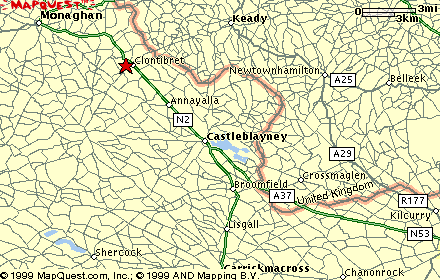
 LOCATION
LOCATIONCounty Monaghan is located in the northern part of the Republic of Ireland, along the boundary with Northern Ireland.
The late in the middle of the map is Lake Muckno - it separates the civil parishes of Muckno and Clontibret.
 |
 LOCATION LOCATIONCounty Monaghan is located in the northern part of the Republic of Ireland, along the boundary with Northern Ireland. The late in the middle of the map is Lake Muckno - it separates the civil parishes of Muckno and Clontibret. |
 HISTORY
HISTORY SOURCES
SOURCES LINKS
LINKS